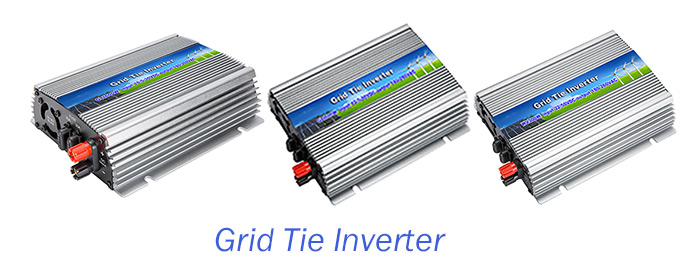A solar inverter functions to convert the variable direct current (DC) output generated by PV solar panels into the alternating current (AC) which is fed into a commercial electrical grid or used by a local, off grid electrical network. Buy the right product for a particular application is very important and there are many factors that go into selecting the best solar inverter. Here are 8 key instructions that you may follow in order to choose the best suited solar inverter for you.

1. Stability of output voltage
In photovoltaic systems, the electrical energy generated by solar cells is first stored in storage batteries and then converted into 220V or 380V AC by solar inverters. However, influenced by the charge and discharge of storage batteries themselves, storage batteries vary widely in the output voltage. For example, storage batteries with 12V of nominal value can vary between 10.8V and 14.4V in the voltage (beyond this range, storage batteries may be damaged). For a qualified solar inverter, when the input voltage varies within this range, the variation of steady-state output voltage should not exceed 5% of the rated value. Meanwhile, when the load suddenly changes, the deviation of output voltage should not exceed 10% of the rated value.
2. Waveform distortion of output voltage
For sine wave inverters, the maximum allowable waveform distortion (or harmonic content) should be specified. In general, it is expressed by the total waveform distortion of the output voltage, which should not exceed 5% (10% is allowed for single-phase output). Since the high-order harmonic current output by inverters will produce eddy current and other additional losses on the inductive load, excessive waveform distortion of inverters will cause serious heating to load components, which is not conducive to the safety of electrical equipment and affects the operational efficiency of the system.
3. Rated output frequency
For loads including motors, such as washing machines and refrigerators, too high or too low frequency will cause the equipment to heat up and reduce the efficiency and service life of the system, because their optimal frequency is 50Hz. Therefore, the output frequency of solar inverters should be a relatively stable value, which is generally 50Hz, and the deviation should be less than 1% under normal working conditions.
4. Load power factor
Power inverters have the ability of inductive load or capacitive load, while the load power factor of sine wave inverters ranges from 0.7 to 0.9 with a rated value of 0.9. When the load power is fixed, if the power factor of the inverter is low, the required capacity of the power inverter will increase. On the one hand, the cost will increase. On the other hand, the apparent power of the AC circuit of the photovoltaic system will increase and the loop current will increase, which will inevitably increase the loss and decrease the efficiency of the system.
5. Solar inverter efficiency
solar inverter efficiency refers to the ratio of output power to input power under specified working conditions, which is expressed in percentage. In general, the nominal efficiency of photovoltaic inverters refers to the efficiency under 80% of pure resistance load. Since the overall cost of photovoltaic system is relatively high, it is necessary to maximize the efficiency of photovoltaic solar inverters, reduce the cost of the system and improve the cost performance of photovoltaic system. At present, the nominal efficiency of mainstream inverters is between 80% and 95%. For low-power inverters, the efficiency is not less than 85%. In the actual design of photovoltaic system, not only the high-efficient inverters should be selected, but also the load of photovoltaic system should work near the optimal efficiency through the rational configuration of the system.
6. Rated output current (or rated output capacity)
Rated output current refers to the rated output current of the solar inverter within the range of specified load power factor. Some solar inverters offer rated output capacity in the unit of VA or KVA. Rated output capacity of the inverter refers to the product of the rated output voltage and the rated output current when the output power factor is 1 (i.e. the pure resistance load).
7. Protection measures
A solar inverter with good performance should also have complete protective functions or measures, so as to deal with various abnormal situations in the actual use, so that the inverter itself and other parts of the system will not be damaged.
1). Input under-voltage protection
When the input voltage is less than 85% of the rated voltage, the inverter should be protected and displayed with a prompt.
2). Input over-voltage protection
When the input voltage is more than 130%, the solar inverter should be protected and displayed with a prompt.
3). Over-current protection
Over-current protection of inverters should ensure timely operation when short-circuit occurs or current exceeds the allowable value, so as to avoid the damage of surge current. When the working current exceeds 150% of the rated value, the converter should be able to automatically protect itself.
4). Output short-circuit protection
The operation time of short-circuit protection of inverters should not exceed 0.5s.
5). Input converse-connection protection
When the positive and negative poles of the input end are inversely connected, the inverters should have protective function and display.
6). Lightning protection
Solar inverter should have lightning protection.
7). Over-temperature protection
In addition, for the Inverters without voltage stabilization measures, they should also have protective measures for over-voltage output, so as to protect the load from over-voltage damage.
8. Noise
Transformers, filters, inductors, electromagnetic switches and fans in power and electronic devices all produce noise. In normal operation, solar inverters should not produce more than 80dB of noise and small-scale inverters should not produce more than 65dB of noise.
Inverter.com offers on grid inverter, off grid inverter, micro inverter, solar pump inverter for your selection.
